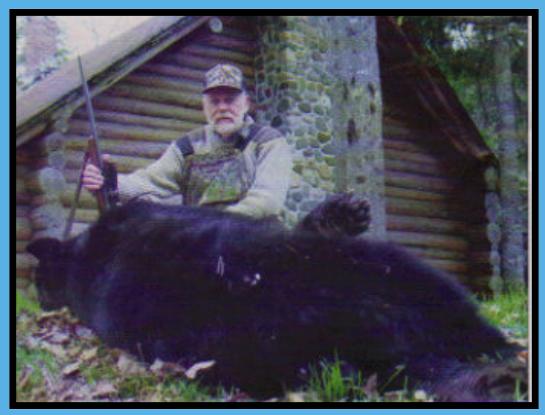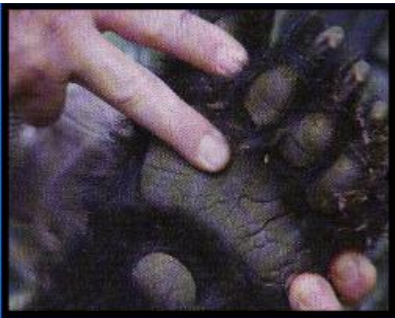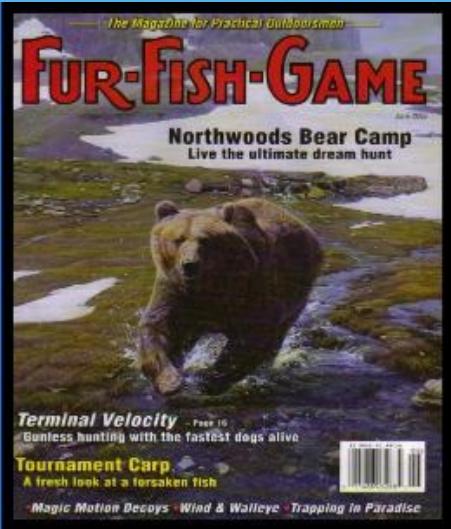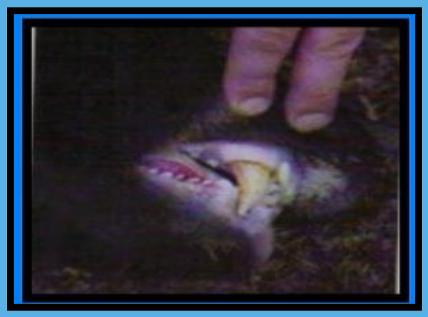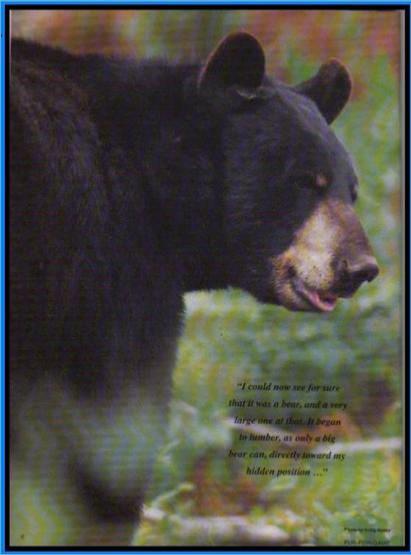I focused on an ever-so-tiny strip of the blackest black, which somehow appears out of place in the browns, greens and grays of the New Brunswick forest. Surely such a colour could only belong to the hide of a black bear, but there was no movement and no way to make out any form or details.
I delicately removed my rifle from where I had hung it on a nearby tree limb, knowing that any sound would be a big mistake. I smothered the rifle safety with a gloved hand as I slowly slipped it onto the off position.
The time lapse must have only been a few moments, yet it seemed like an eternity before that tiny sliver of black began to move. I could now see for sure that it was a bear, and a very large one at that. It began to lumber, as only a big bear can, directly toward my hidden position high above the ground in a tree-stand. The only shot was to the center of the chest or to the short neck, but as long as the bear was coming to me, there didn't seem to be any need to take a less than ideal shot. I thought the bear would turn toward the hindquarter of beef that my outfitter Tom Mosher and I had hung only 8 hours earlier.Unfortunately, as is sometimes the case in hunting, the reward for patience can be missed opportunity. But, I'm getting ahead of my story. Let's go back to the beginning, to when I contacted Tom to book a Canadian spring bear hunt with Canoose Camps.
Tom suggested that I come the second week of May, to hunt the new grass in the open pasture lands. However, he cautioned that the grassy meadows offer little cover to conceal a hunter's approach, and considering the bear's shy nature and finely turned senses. One must come prepared for a shot out to 400 yards, sometimes even farther. After giving it some thought, I decided my shooting skills and my 300 Winchester Magnum Ruger single-shot were up to the challenge.
I arrived in camp a day early. After traveling, I always like to check my rifle by firing a couple of shots a a paper target. Doing so also dirties the bore just enough that point of impact for the first shot at game will be consistent with any needed follow-up rounds. In addition, there is just something about feeling the recoil and smelling the burnt powder that tends to realign my thinking.
A quick trip to a local gravel pit accomplished all of those objectives, and within minutes, we were headed out to check for bear sign around the edges of the meadows. Unfortunately, there simply was no bear sign in those areas, and talking to the local dairy farmers only confirmed the absence of bears. No one had seen a bear since last fall. Clearly, the bears had not yet begun to seek the high nutritional value of those tender, emerging shoots.
When bears come out of hibernation they may be hungry, but they don't go on a feeding frenzy. Nor do they prefer rotting meat as some say. Bears are instead prone to feed selectively and in limited quantities, especially during the first few weeks after leaving the den. While there was lots of edible green grass in those pastures, for whatever reasons, the bears were not yet feeding on it.
If I wanted to get a bear, I simply had to adjust my hunting tactics. Tom said my best option would be to hunt from a stand in the woods and the stands at Canoose Camps are maintained year-round through the use of bait, consisting of 55-gallon drums containing their own bear-bait concoction. For added appeal when a hunter is on stand, fresh hunks of beef may be hung from the neighbouring trees.
For the most part, spring bears in New Brunswick are only active in the evening. For this reason, hunts are conducted late in the day. Most outfitters want their hunters on stand by 3:30 or 4:00p.m, then they may hunt through the end of legal shooting time, 30 minutes after sunset. This leaves a great deal of in-camp time for relaxing or, better yet, fishing the rivers, lakes and ponds that lie in close proximity to camp. And the spring fishing for smallmouth bass, trout and musky can be outstanding.
Unlike what we had found around the meadows, bear sign was virtually everywhere along the 1-1/2 mile trail into my tree stand. Patches of bear hair clung to the bushes, and the muddy ground was laced with tracks, many of which were impressively large.
Tom assured me that in previous seasons, this particular stand had produced a lot of large bears- but then I again found myself facing disappointment.
In the days just prior to my arrival, forest workers had moved in to the area to thin out the small saplings and under-growth, which is commonly done in New Brunswick to open up the forest for better tree growth. This may be good for the timber industry, but it certainly isn't good for anyone looking to fill a bear tag. After a couple of days it became painfully evident that this human activity had driven the bears from the area. The one thing that truly wild black bears don't tolerate is a lot of human encroachment into their territory The next morning, we checked another blind, and much of it appeared extremely fresh. For added appeal, we hung a huge hindquarter of Canadian beef then left the area as quietly and quickly as possible.
Around 4 p.m, I found myself settling in for the evening hunt, and I didn't have long to wait until a big bruin at the opening of this story showed up. My gun was at the ready and the safety was in the off position. I felt that surely the bear would turn toward the bait, providing the broadside shot I wanted But I couldn't have been more wrong.
The big bruin must have picked up a whiff of our trail scent from walking in earlier that morning, because it abruptly whirled and faded into the brush. I maintained my rifle at the ready., but it simple wasn't meant to be. Fifteen minutes later, two distict but distant "woofs" told me that the bear had circled downwind and picked up my current scent stream. Such bear "blowing always means the jig is up.
Disheartened, I settled back to finish out the evening. I tried to comfort myself, thinking that, if nothing else, it would make for a good story to tell around hunting camp. Certainly it emphasized, in a most dramatic way, just how good a black bear's senses really are.
The rest of the evening seemed to go by faster than normal, and soon the last fleeting rays of sunlight were vanishing. I glanced at my watch and confirmed that only a couple of minutes of legal shooting time remained. It was the end of the third day of my five-day hunt. I reluctantly placed my binoculars and canteen inside my daypack, then bent over to pick up my rifle.
In my mind, the hunting day had reached a conclusion, but as someone once said" good things take time, but really great things happen all at once."
As I picked up my rifle and turned to head down the ladder, I was shocked to see a mature black bear standing directly in front of my stand a mere 80 yards. While not quite as large as the earlier bruin, it was a quality black in pristine condition. As the bear lowered its head to take a drink from a mud hole in the trail. I slowly brought the gun to my shoulder. I wasn't gong to let this opportunity escape me.
